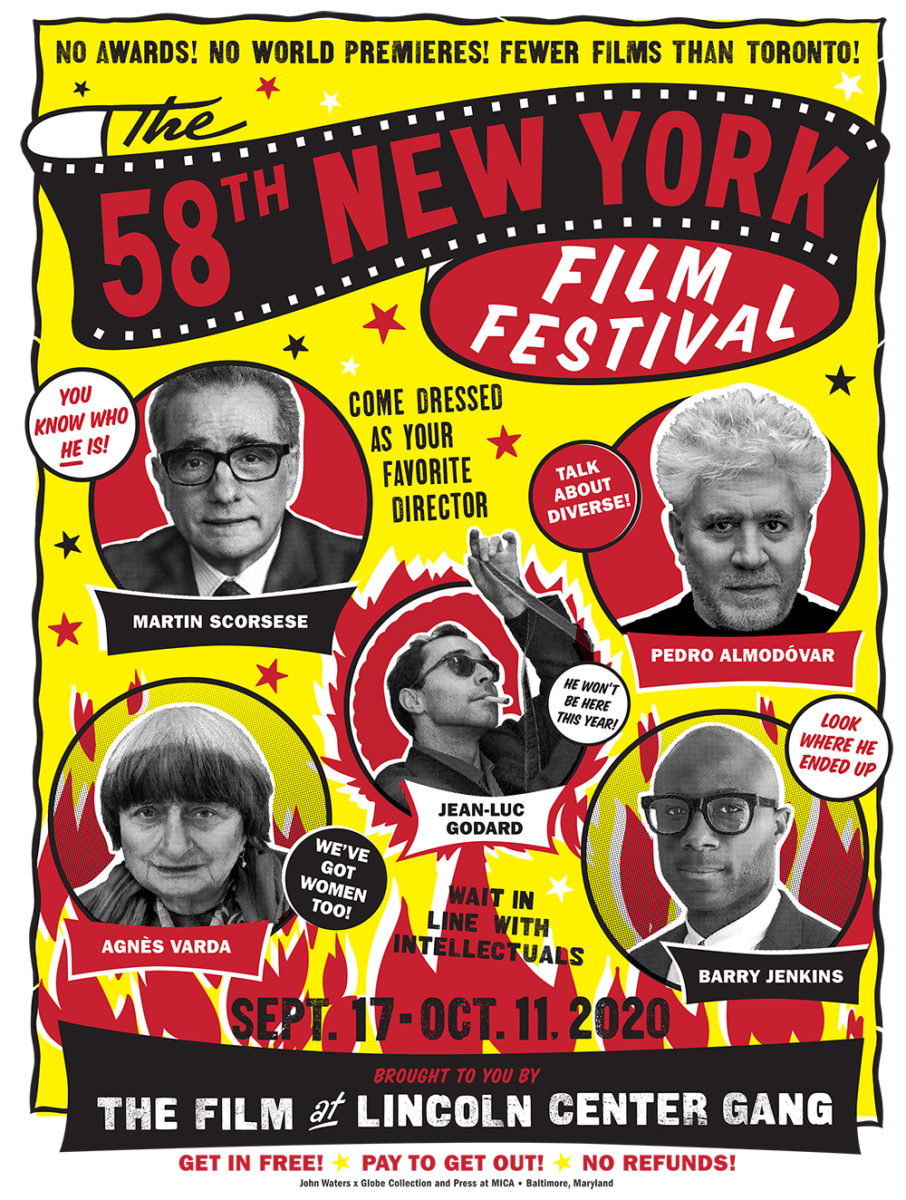The poet and painter William Blake toiled in obscurity, for the most part, and died in poverty.
Twenty some years after his death, his rebellious spirit gained traction with the Pre-Raphaelites.
By the dawning of the Age of Aquarius, Blake was ripe to be venerated as a counter-cultural hero, for having flown in the face of convention, while championing gender and racial equality, nature, and free love.
Reclining half-naked on a “a fabulous couch in Harlem,” poet Allen Ginsburg had a hallucinatory encounter wherein Blake recited to him “in earthen measure.”
Ditto poet Michael McClure, though in his case, Bob Dylan’s “Gates of Eden” served as something of a medium:
I had the idea that I was hallucinating, that it was William Blake’s voice coming out of the walls and I stood up and put my hands on the walls and they were vibrating.
Blake’s work (and world view) continues to exert enormous influence on graphic novelists, theatermakers, and creatives of every stripe.
He’s also a dab hand at animation, collaborating from beyond the grave.
The short above, a commission for a late ‘70s Blake exhibition at The Tate, envisions a roundtrip journey from Heaven to Hell. Animator Sheila Graber parked herself in the Sculpture Hall to create it in public view, pairing Blake’s line “Energy is Eternal delight” with a personal observation:
Whether we use it to create or destroy—it’s the same energy. The practice of art can turn a person from a vandal to a builder!
More recently, the Tate gave director Sam Gainsborough access to super high-res imagery of Blake’s original paintings, in order to create a promo for last year’s blockbuster exhibition.
Gainsborough and animator Renaldho Pelle worked together to bring the chosen works to life, frame by frame, against a series of London buildings and streets that were well known to Blake himself.
The film opens with Blake’s Ghost of a Flea emerging from the walls of Broadwick Street, where its creator was born, then stalking off, bowl in hand, ceding the screen to God, The Ancient of Days, whose reach spreads like ink across the gritty facade of a white brick edifice.
Seymour Milton’s original music and Jasmine Blackborow’s narration of excerpts from Blake’s poem “Auguries of Innocence” seem to anticipate the fraught current moment, as does the entire poem:
Auguries of Innocence
To see a World in a Grain of Sand
And a Heaven in a Wild Flower
Hold Infinity in the palm of your hand
And Eternity in an hour
A Robin Red breast in a Cage
Puts all Heaven in a Rage
A Dove house filld with Doves & Pigeons
Shudders Hell thr’ all its regions
A dog starvd at his Masters Gate
Predicts the ruin of the State
A Horse misusd upon the Road
Calls to Heaven for Human blood
Each outcry of the hunted Hare
A fibre from the Brain does tear
A Skylark wounded in the wing
A Cherubim does cease to sing
The Game Cock clipd & armd for fight
Does the Rising Sun affright
Every Wolfs & Lions howl
Raises from Hell a Human Soul
The wild deer, wandring here & there
Keeps the Human Soul from Care
The Lamb misusd breeds Public Strife
And yet forgives the Butchers knife
The Bat that flits at close of Eve
Has left the Brain that wont Believe
The Owl that calls upon the Night
Speaks the Unbelievers fright
He who shall hurt the little Wren
Shall never be belovd by Men
He who the Ox to wrath has movd
Shall never be by Woman lovd
The wanton Boy that kills the Fly
Shall feel the Spiders enmity
He who torments the Chafers Sprite
Weaves a Bower in endless Night
The Catterpiller on the Leaf
Repeats to thee thy Mothers grief
Kill not the Moth nor Butterfly
For the Last Judgment draweth nigh
He who shall train the Horse to War
Shall never pass the Polar Bar
The Beggars Dog & Widows Cat
Feed them & thou wilt grow fat
The Gnat that sings his Summers Song
Poison gets from Slanders tongue
The poison of the Snake & Newt
Is the sweat of Envys Foot
The poison of the Honey Bee
Is the Artists Jealousy
The Princes Robes & Beggars Rags
Are Toadstools on the Misers Bags
A Truth thats told with bad intent
Beats all the Lies you can invent
It is right it should be so
Man was made for Joy & Woe
And when this we rightly know
Thro the World we safely go
Joy & Woe are woven fine
A Clothing for the soul divine
Under every grief & pine
Runs a joy with silken twine
The Babe is more than swadling Bands
Throughout all these Human Lands
Tools were made & Born were hands
Every Farmer Understands
Every Tear from Every Eye
Becomes a Babe in Eternity
This is caught by Females bright
And returnd to its own delight
The Bleat the Bark Bellow & Roar
Are Waves that Beat on Heavens Shore
The Babe that weeps the Rod beneath
Writes Revenge in realms of Death
The Beggars Rags fluttering in Air
Does to Rags the Heavens tear
The Soldier armd with Sword & Gun
Palsied strikes the Summers Sun
The poor Mans Farthing is worth more
Than all the Gold on Africs Shore
One Mite wrung from the Labrers hands
Shall buy & sell the Misers Lands
Or if protected from on high
Does that whole Nation sell & buy
He who mocks the Infants Faith
Shall be mockd in Age & Death
He who shall teach the Child to Doubt
The rotting Grave shall neer get out
He who respects the Infants faith
Triumphs over Hell & Death
The Childs Toys & the Old Mans Reasons
Are the Fruits of the Two seasons
The Questioner who sits so sly
Shall never know how to Reply
He who replies to words of Doubt
Doth put the Light of Knowledge out
The Strongest Poison ever known
Came from Caesars Laurel Crown
Nought can Deform the Human Race
Like to the Armours iron brace
When Gold & Gems adorn the Plow
To peaceful Arts shall Envy Bow
A Riddle or the Crickets Cry
Is to Doubt a fit Reply
The Emmets Inch & Eagles Mile
Make Lame Philosophy to smile
He who Doubts from what he sees
Will neer Believe do what you Please
If the Sun & Moon should Doubt
Theyd immediately Go out
To be in a Passion you Good may Do
But no Good if a Passion is in you
The Whore & Gambler by the State
Licencd build that Nations Fate
The Harlots cry from Street to Street
Shall weave Old Englands winding Sheet
The Winners Shout the Losers Curse
Dance before dead Englands Hearse
Every Night & every Morn
Some to Misery are Born
Every Morn and every Night
Some are Born to sweet delight
Some are Born to sweet delight
Some are Born to Endless Night
We are led to Believe a Lie
When we see not Thro the Eye
Which was Born in a Night to perish in a Night
When the Soul Slept in Beams of Light
God Appears & God is Light
To those poor Souls who dwell in Night
But does a Human Form Display
To those who Dwell in Realms of day
Related Content:
William Blake’s Masterpiece Illustrations of the Book of Job (1793–1827)
Ayun Halliday is an author, illustrator, theater maker and Chief Primatologist of the East Village Inky zine. Follow her @AyunHalliday.









